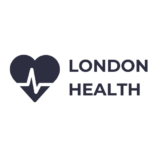Chiropractic is one of the most effective forms of alternative therapy; it uses non-invasive methods to treat a wide range of conditions and can be beneficial to a large number of patients.
What exactly is chiropractic?
Chiropractic treatment is founded on the belief that the general health, positioning and alignment of structures in the musculoskeletal system can affect a person’s overall health; the position of the spine is particularly influential to determining general standards of health, according to the philosophy of chiropractic. Chiropractic treatment also relies heavily on the body’s ability to heal naturally; this is based on the ability of patients to make positive lifestyle choices such as eating well, exercising regularly and having a positive mental approach to life. Chiropractic treatment is classified as an alternative form of medicine as it does not involve the use of medication or invasive surgery.
The name chiropractic comes from the Greek and translates roughly as ‘done using the hands’; the majority of chiropractic treatments subsequently involve actions using the hands; massage therapy is perhaps the most well-known type of chiropractic treatment.
Does chiropractic work?
As with most complementary and alternative medicines, there is some debate amongst health experts about the efficacy of chiropractic; however, the vast majority of experts agree that chiropractic is an effective treatment. Chiropractic treatment has also recently been approved for the treatment of lower back pain by the National Institute for Health and Clinical Excellence (NICE); this organisation publishes guidelines for the treatment of all conditions in the UK so this is a significant stamp of approval.
Chiropractic is also becoming increasingly popular with NHS trusts although the number of trusts currently offering chiropractic services is still relatively low. Many GPs recommend chiropractic treatment for patients who have persistent back pain.
Which health conditions can be treated using chiropractic?
There is a huge range of conditions which can benefit from chiropractic treatment; the most popular conditions include:
- Lower back pain: this is often associated with poor posture brought about by long periods of sitting down and is an increasingly common complaint as people live increasingly sedentary lifestyles. Back pain may also be related to injuries caused by heavy lifting and sudden movements.
- Shoulder problems: chiropractic increases flexibility and movement in the joint, which often releases tension in the joint and eases pain.
- Neck and upper back pain
- Sciatica: chiropractic treatment helps to increase the range of movement in the lower back, which reduces the possibility of the sciatic nerve becoming trapped. Although sciatica is associated with the sciatic nerve, it is often caused by problems in other parts of the body; commonly, sciatica is associated with inflammation of the sacro-iliac joint.
- Sports injuries: many sports place constant pressure on the back, which can lead to persistent pain the shoulders, back and neck. Increasingly, sports players use chiropractic as a means of conditioning the body as well as a method of treatment for existing conditions.
According to the General Chiropractic Council, research is also currently underway to assess the success of chiropractic in treating conditions including asthma, colic in infants and persistent headaches.
Who can benefit from chiropractic treatment?
Chiropractic treatment can benefit a huge range of people, from elderly people struggling with arthritis to young people with muscular aches and pains. Anyone can suffer from general aches and pains which may become persistent if they are not treated; chiropractic helps to identify the source of the pain and find a method of easing it.
Chiropractic treatment is increasingly popular with young professionals who spend long periods of time seated at a desk; sitting down for long periods of time can place strain on the spine and surrounding muscles and tissue, especially if people are slouched or slumped.
Chiropractic is also becoming an integral part of sports medicine; the number of professional sports clubs employing a chiropractor has increased significantly in recent years. The treatments provided by chiropractors help to condition the back in order to reduce the chance of injury as well as helping athletes to recover from a previous injury.
What happens during a chiropractic appointment?
The initial appointment will usually be longer than subsequent appointments as the chiropractor will need to find out information about the patient’s medical history; this will include any existing medical conditions, any medications and any hereditary illnesses or family health problems. Once the chiropractor has found out all the necessary information they will assess the patient’s general health by examining the patient and conducting tests, if necessary. The aim of the sessions is to identify possible sources of pain and treat the cause; chiropractors will usually be keen to eliminate any serious conditions by asking questions about when the patient last visited their GP or when they last had a medical examination, for example.
Subsequent appointments will be used to address the cause of the problems; the nature of the treatment will depend on the nature of the problem but will usually entail a combination of different methods; massage therapy usually makes up the bulk of chiropractic treatment but there are several other methods which may also be used.
Is chiropractic available on the NHS?
Currently, the number of Primary Care Trusts offering chiropractic treatment is relatively low; however, the number is steadily increasing as the efficacy of chiropractic treatment becomes increasingly apparent. In the future, chiropractic may become an integral part of NHS care.
How much does chiropractic treatment cost?
The cost of chiropractic treatment varies according to the different fees charged by different chiropractors. It is best to check prices with a range of different chiropractors rather than just going with the first one you come across. Typically, a half hour appointment should cost in the region of £30. Patients with private health insurance may be entitled to claim their treatment on their insurance, but the policy should be checked thoroughly before the patient has the treatment.
Are there any risks or side-effects of chiropractic treatment?
Some patients may experience very mild stiffness and pain following a session of chiropractic treatment; however, this is usually because the patient is not used to the treatment and not because any damage has been done. Pain is usually not severe and will pass quickly after the session has been completed. Unlike many other treatments, chiropractic has very few side-effects, as no drugs or invasive techniques are used.
How long will treatment take?
The number of sessions required depends on the individual patient; the nature of their condition and how they react to initial sessions will usually determine the duration of the treatment. Some patients will require more sessions than others; your chiropractor will be able to give you an idea of the amount of sessions you will need after the initial consultation.
Is chiropractic painful?
Initially, chiropractic treatment may feel a little awkward and painful; however, most patients do not experience any long-term or repeated episodes of pain; as the patient gets used to the treatment, they are much less likely to feel any pain.
Do I need to be referred by my GP?
People who are interested in chiropractic treatment do not need to be referred by their GP, although many GPs recommend chiropractic or osteopathic treatment for patients that complain of back pain.
How do I find a chiropractor?
If you are interested in chiropractic treatment you can use a variety of different methods to find a chiropractor; many practices have their own websites where you can details of the chiropractors, treatments and prices, as well as finding contact details. The General Chiropractic Council has a list of all registered chiropractors in the country; this can be found on their website. You can also ask your GP for details of local chiropractors. Once you have found a suitable chiropractor you can arrange an appointment by just giving them a call.
Treatments for chiropractic are listed below

